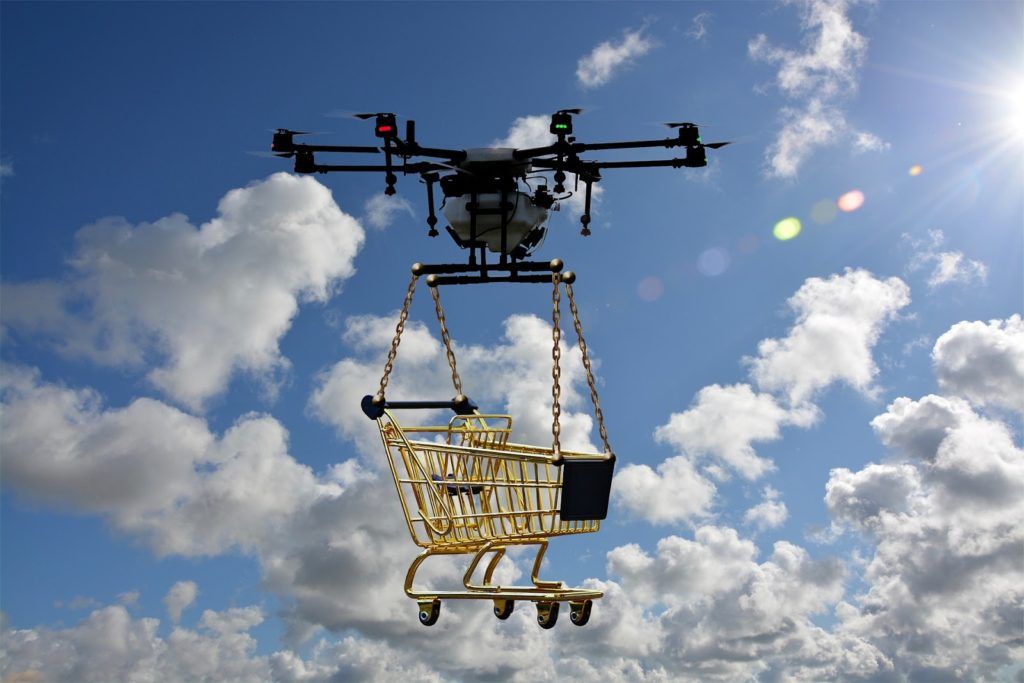Shipping logistics seem like they’re on the verge of a revolution. Drone delivery and self-driving trucks are the wave of the future, even if it’s not always clear how the industry will get there. It takes a lot of insight, planning and good old-fashioned hard work to deploy a drone delivery system, and the world of driverless trucks is still in its infancy. What seemed like science fiction a decade ago is fast becoming the headlines of today, and it is an exciting time as many companies work to shape and predict what the future will bring.
How Drones Can Change the Logistics of Delivery
The face of online delivery has definitely changed. The “milk runs” that once saw consumers receiving deliveries a week (or even longer) after ordering are now a thing of the past. Consumers expect delivery within the week, and two-day or overnight shipping is now a priority for many retailers. According to projections from Amazon, drone delivery might be even faster. It’s entirely possible that consumers could order and receive their products in less time than it takes to get an inner-city pizza delivery.
Ark Investment Management notes that Amazon’s plans for drones could well include fulfillment-center-to-door deliveries in approximately 30 minutes. Shipping costs for that final few miles of shipping, which are often dictated by the number of delivery locations and volume of packages, could be dramatically reduced. Consumers could soon hear the buzzing of drones overhead on a regular basis, and think nothing more of it than they do seeing the ubiquitous delivery trucks of today.

How Driverless Trucks Will Be Deployed
Of course, large loads will still travel by freight. The move towards autonomous trucks is likely to have a major impact on both truckload shipping and shipments of multiple packages that don’t quite fill up a single trailer, or LTL (less than truckload) freight. Driverless trucks are likely to be phased in over time, as consumers and regulators still have many questions and qualms about sharing the road with robots. Few trust AI (artificial intelligence) to helm a powerful autonomous semi truck driving alongside everyday commuters at this point.
It’s also likely that we’ll see a model closer to what the train industry uses. The routes and minute-to-minute driving, for both full-truck loads and LTL freight, may be handled by autonomously, but a driver in the cab will likely act as conductor to make sure everything runs smoothly. Over time, we may even see that position moved out of the cab and into a remote logistics center, with a single conductor overseeing multiple trucks the same way the military currently oversees their drones.
Do Robots Threaten Drivers and Delivery Workers?
There’s little question that the move towards robotic delivery will definitely upend current logistics systems. With fewer drivers and deliverymen needed to control fleets of trucks and drones, companies can reduce labor costs at the expense of employment for potentially lifelong workers. Businesses will likely reap the rewards of reduced insurance costs, with many estimates placing the number of collisions for autonomous deliveries at 10 percent of their current levels. Driver training schools could become a thing of the past or transform into remote logistics training centers.
Some organizations are trying to resist this change, but ultimately, delivery workers are likely to see a phasing out of their jobs. Diversity is key, as many can move into other lines of work in the same field. Maintenance, organization and dispatch professionals are likely to be more in demand than ever. Door-to-door deliveries may no longer need drivers, but those who understand delivery scheduling and similar logistics will be valuable assets to companies whether or not a human is behind the wheel.
The future is soon, but it’s not yet here. UPS estimates that drivers make an average of 120 deliveries on each run, with that type of bulk delivery system making the ultimate cost of shipping a package much less than the price charged to consumers. Delivery drivers don’t have to return to the station after each delivery for a new pickup, or a literal recharge, and the wheels of autonomous regulation are likely to turn very slowly. As the logistics industry continues to transform, FreightPros is ready to handle the challenge and connect businesses with the right shipping solutions, whatever new shape they take.